
ΕΓΓΡΑΨΟΥ
για να λαμβάνεις τα νέα του Archetype στο email σου!
Thank you!
You have successfully joined our subscriber list.
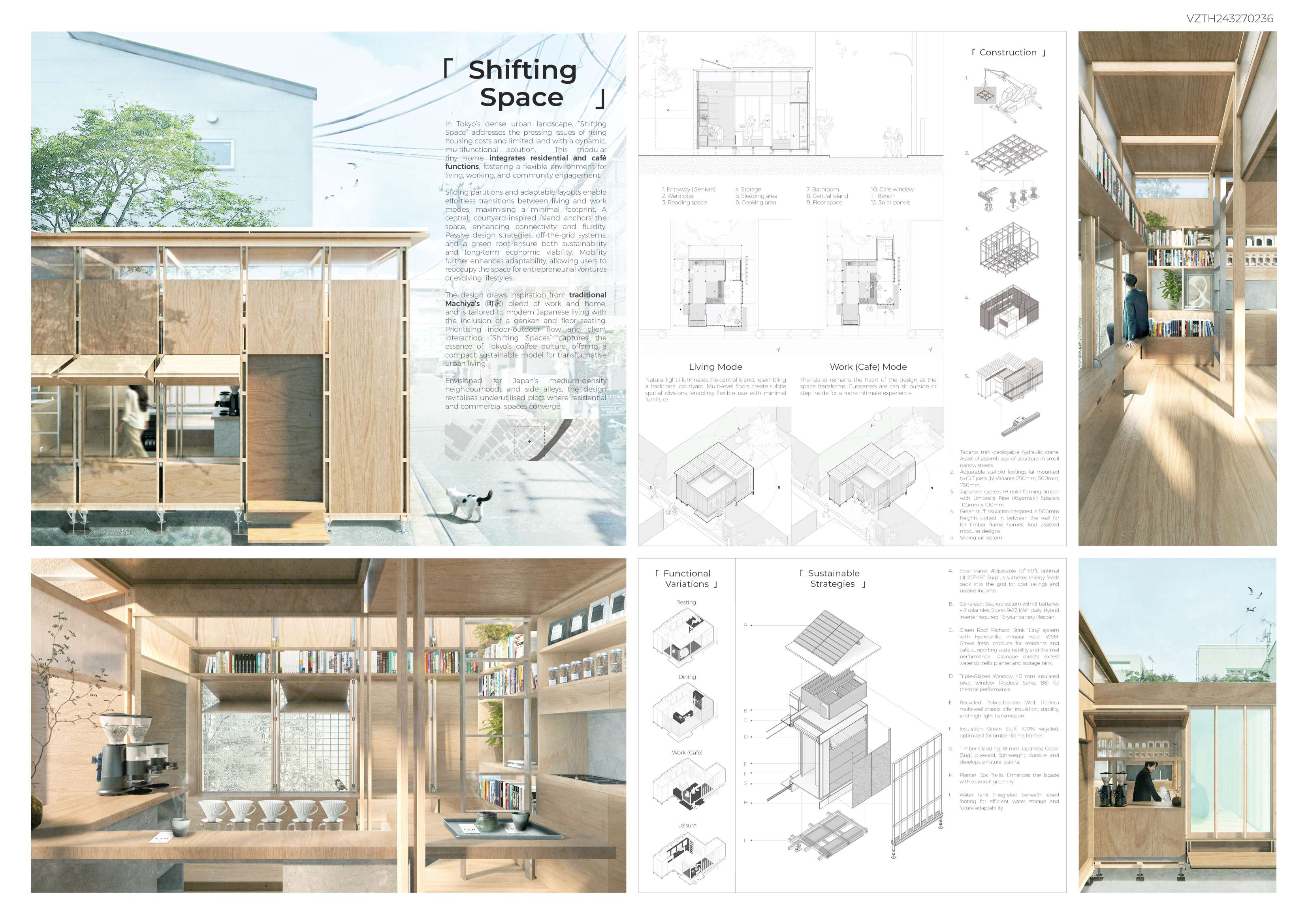
The Tiny House competition looked to celebrate individuality and sustainability through innovative designs redefining resourceful living. Through this platform, we explored the various avenues of mobile living spaces and theunbridled freedom they would offer.
In this architecture design competition, participants were tasked with designing a comfortable off-the-grid living accommodation for two people under 300 sq. ft. that not only caters to their present-day needs but also anticipates and fulfills needs from the unseen future. Participants from over 46 countries came up with their creative and sustainable design solutions to cater to this spatially challenging Architectural problem. Volume Zero Competition thanks all the competitors for participating in this competition and for contributing to this competition's research.
The esteemed jury for judging this competition consisted of Carlos Patrón (Taco taller de), Dinesh Suthar (Design Work Group), Fran Silvestre (Fran Silvestre Arquitectos), NguyenDang Anh Dung (AD + studio), Rayne Fouché (FouchéArchitects), Realrich Sjarief (RAW), Rohit Mankar (Architecture Brio), Ülar Mark (Kodasema), Di Zhan (F.O.G. Architecture), Anagha Patil & Sanjay Patil (Environ Planners), Fati Fakhr (ZAV Architects), Jon Gentry (GO'C).
The top three winners and Best Student were awarded total prize money of $4,500 while ten entries received Honorable Mentions. Here are the winning entries.
FIRST PLACE
Shifting Space - Harris Qaiser and Annie Cheng (New Zealand)
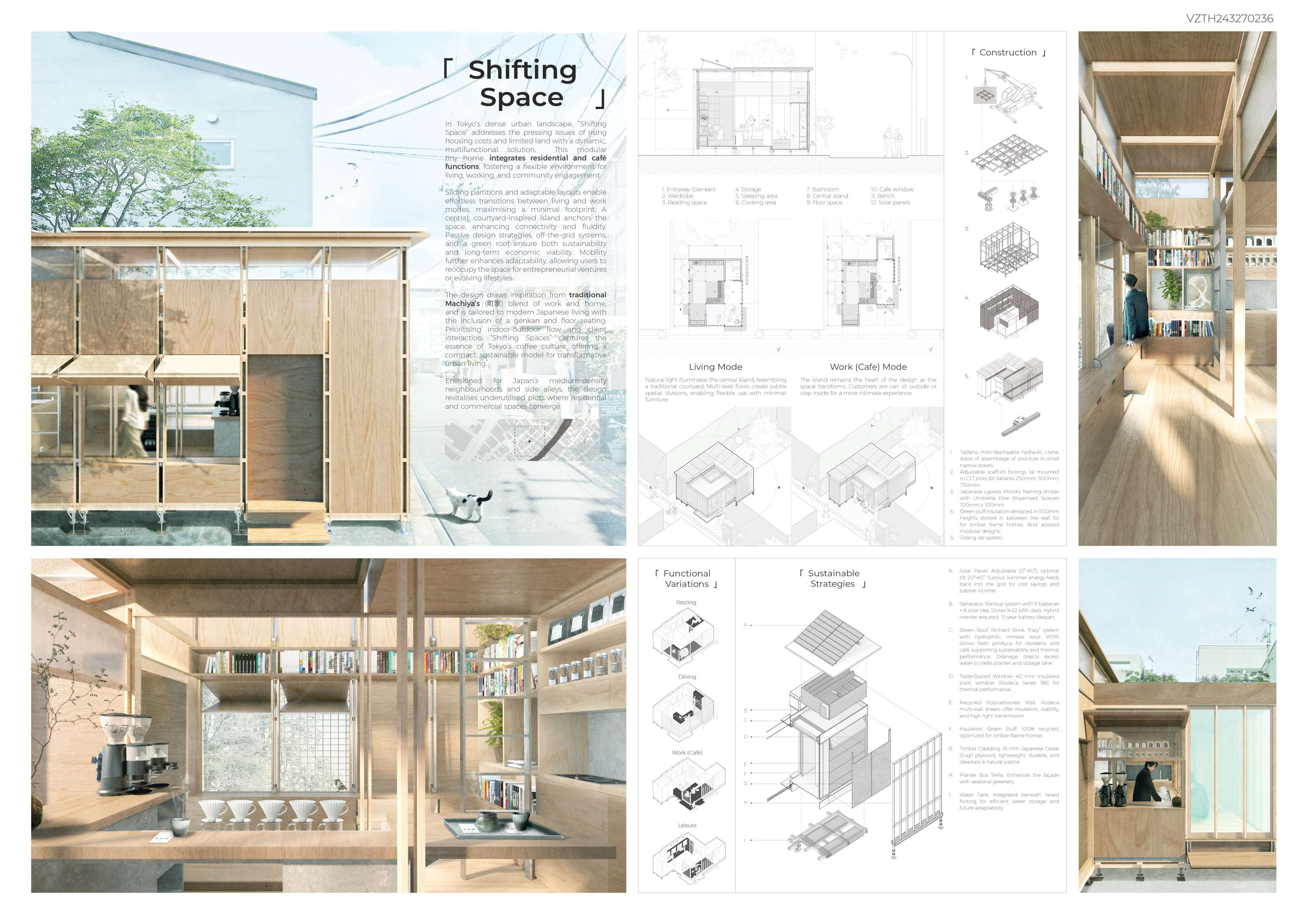
In Tokyo’s dense urban landscape, “Shifting Space” addresses the pressing issues of rising housing costs and limited land with a dynamic, multifunctional solution. This modular tiny home integrates residential and café functions, fostering a flexible environment for living, working, and community engagement.
Sliding partitions and adaptable layouts enable effortless transitions between living and work modes, maximizing a minimal footprint. A central, courtyard-inspired island anchors the space, enhancing connectivity and fluidity. Passive design strategies, off-the-grid systems, and a green roof ensure both sustainability and long-term economic viability. Mobility further enhances adaptability, allowing users to reoccupy the space for entrepreneurial ventures or evolving lifestyles.
SECOND PLACE
Water Hunter - Arash Madani, Elaheh Ashoori & Fatemeh Zarini (Iran)
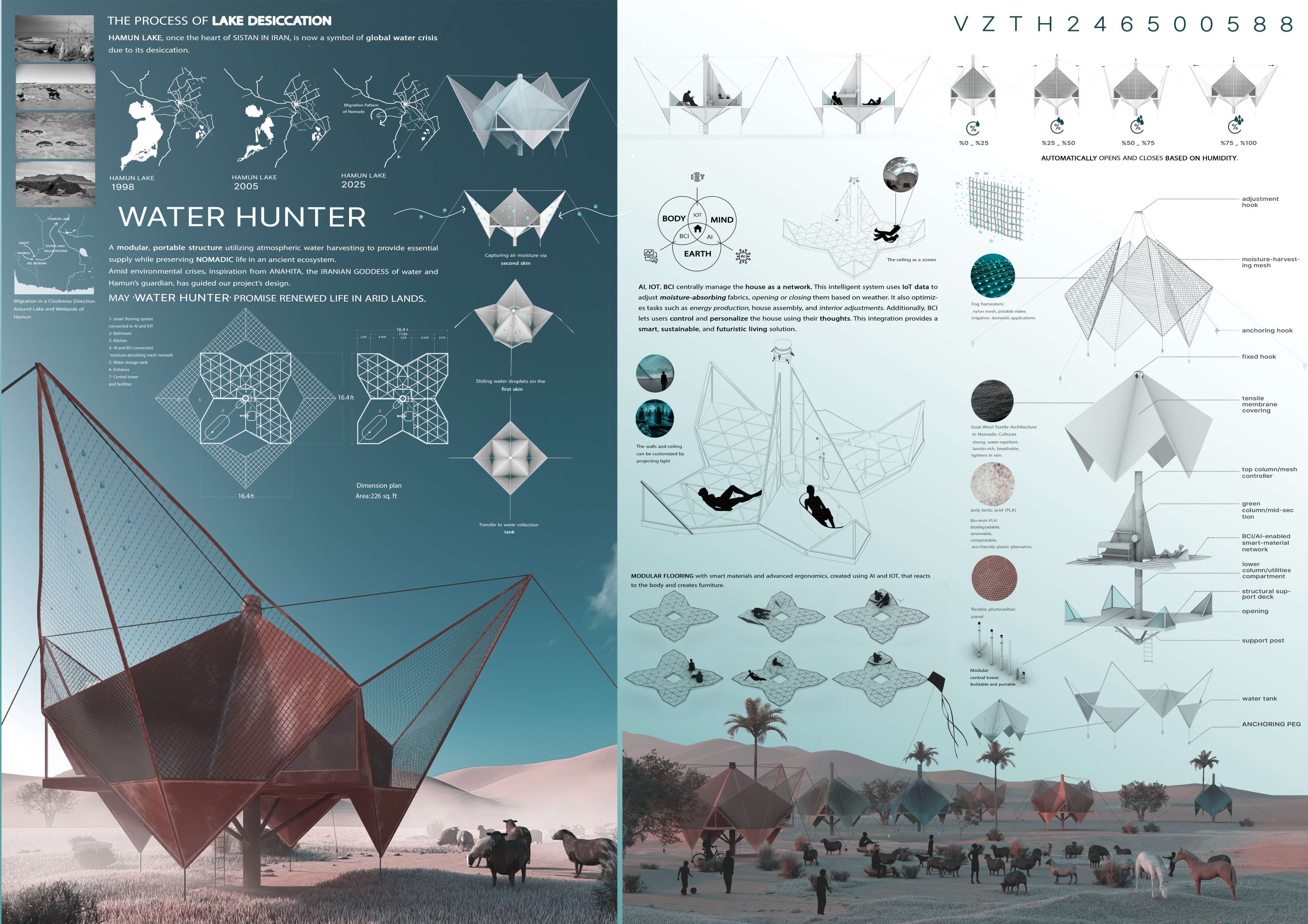
A modular, portable structure utilizing atmospheric water harvesting to provide essential supply while preserving NOMADIC life in an ancient ecosystem. Amid environmental crises, inspiration from ANAHITA, the IRANIAN GODDESS of water and Hamun’s guardian, has guided our project’s design.
MAY‘WATER HUNTER’PROMISE RENEWED LIFE IN ARID LANDS.
AI, IOT, BCI centrally manage the house as a network. This intelligent system uses IoT data to adjust moisture-absorbing fabrics, opening or closing them based on weather. It also optimizes tasks such as energy production, house assembly, and interior adjustments. Additionally, BCI lets users control and personalize the house using their thoughts. This integration provides a smart, sustainable, and futuristic living solution.
THIRD PLACE
Revolve - Stephen Centorrino & Owen Axisa (Malta)
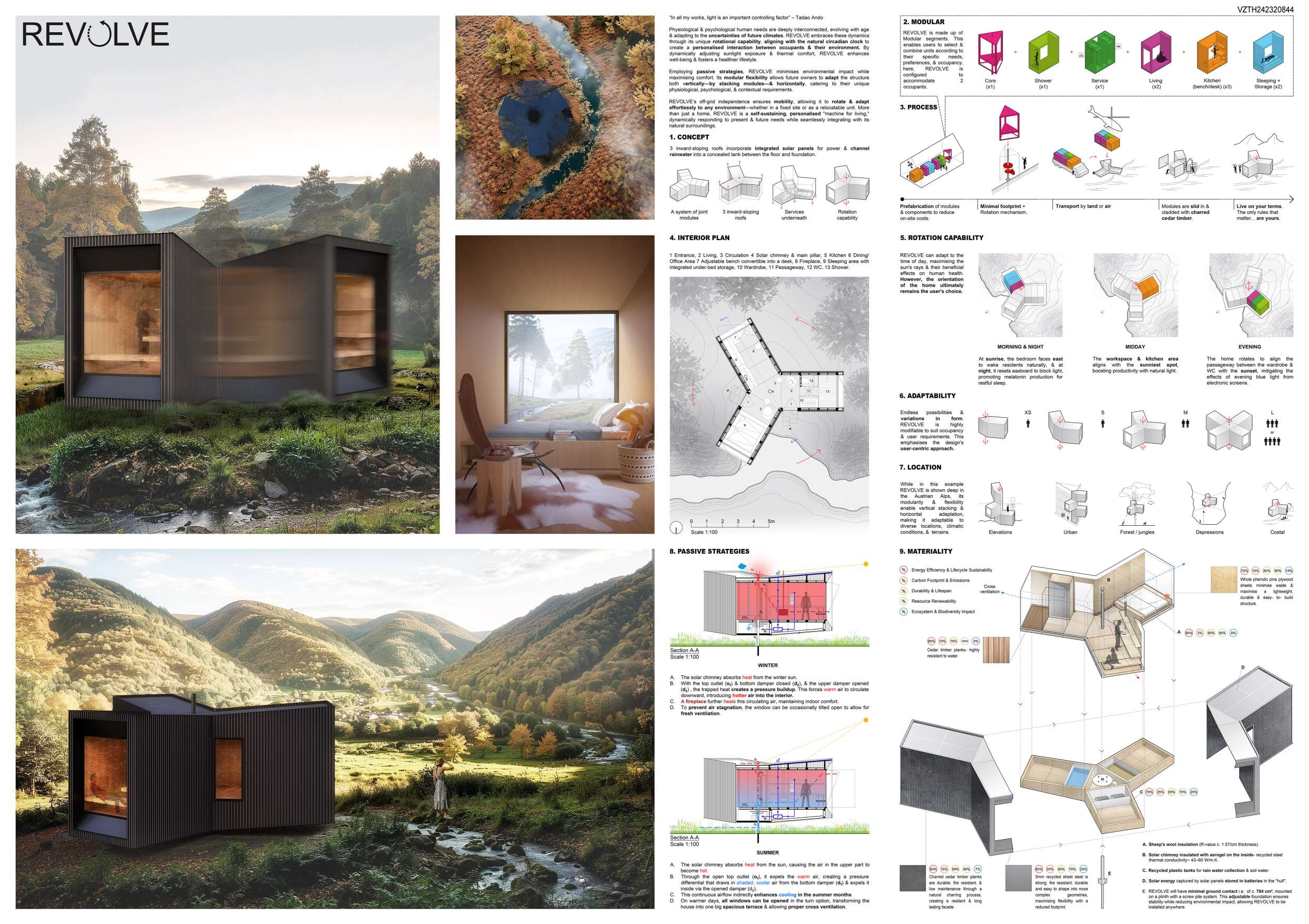
“In all my works, light is an important controlling factor” – Tadao Ando
Physiological & psychological human needs are deeply interconnected, evolving with age & adapting to the uncertainties of future climates. REVOLVE embraces these dynamics through its unique rotational capability, aligning with the natural circadian clock to create a personalised interaction between occupants & their environment. By dynamically adjusting sunlight exposure & thermal comfort, REVOLVE enhances will-being & fosters a healthier lifestyle.
Employing passive strategies, REVOLVE minimize environmental impact while maximizing comfort. It’s modular flexibility allows future owners to adapt the structure both vertically– by stacking modules-& horizontally, catering to their unique physiological, psychological, & contextual requirements.
STUDENT AWARD
CULTURE IS STRUCTURE - Arthur Legrain (France)
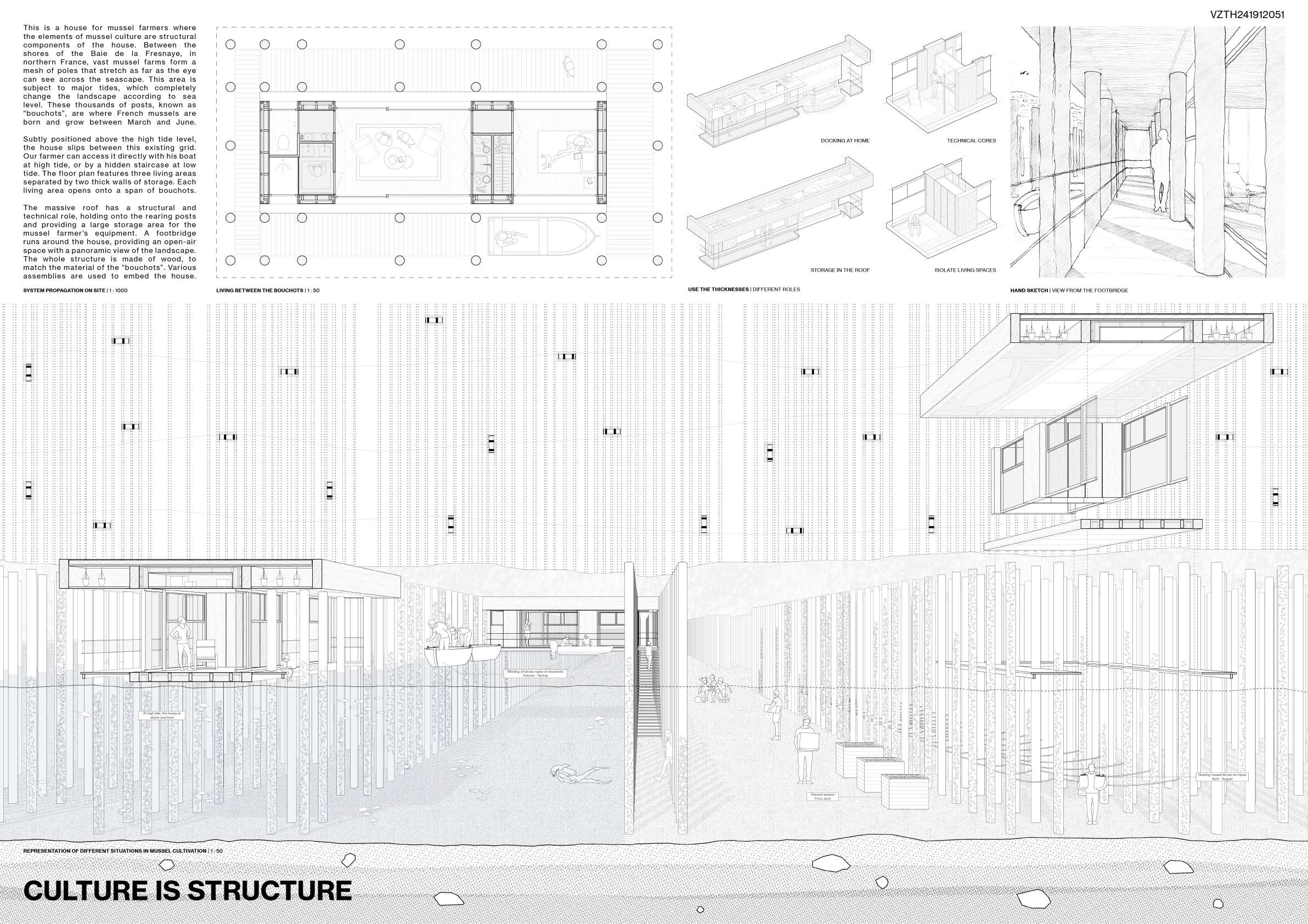
This is a house for mussel farmers where the elements of mussel culture are structura lcomponents of the house. Between the shores of the Baie dela Fresnaye, in northern France, vast mussel farms form a mesh of poles that stretch as far as the eye can see across the seascape. This area is subject to major tides, which completely change the landscape according to sea level. These thousands of posts,known as“bouchots”,are where French mussels are born and grow between March and June.
Subtly positioned above the high tide level, the house slips between this existing grid. Our farmer can access it directly with his boat at high tide, or by a hiddenstaircase at low tide. The floor plan features three living areas separated by two thick walls of storage. Each livingarea opens onto a span of bouchots.
Honourable Mentions: Honourable Mention 1
ORUGA - Paola edid Diaz (Argentina)

Honourable Mention 2
CASA REGIA - Felipe Oliva, Camila Antonia Aguilar Cavieres and Arih Siqueira (Chile)
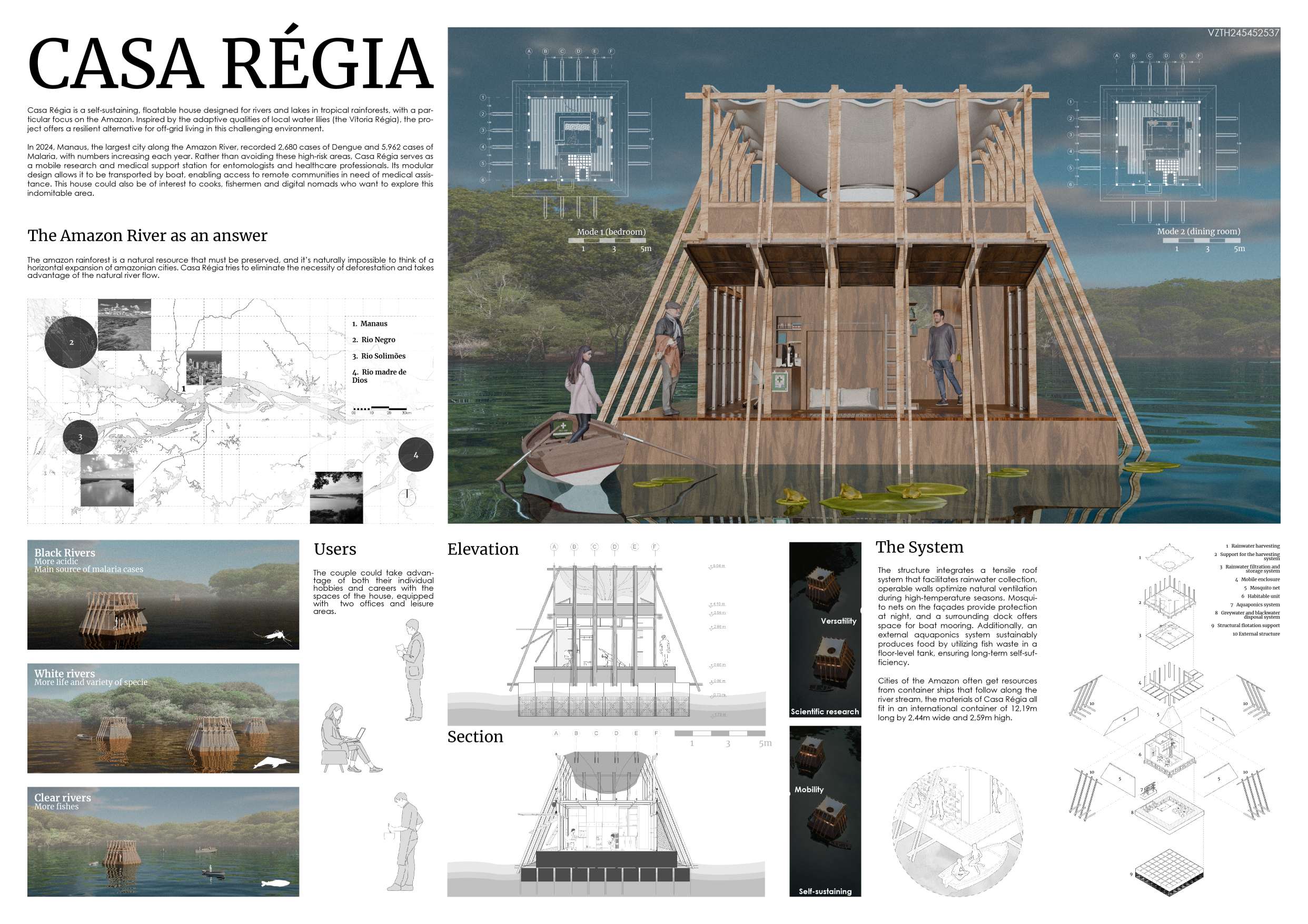
Honourable Mention 3
Maison-Scene - Nike Schoenfeld (France)
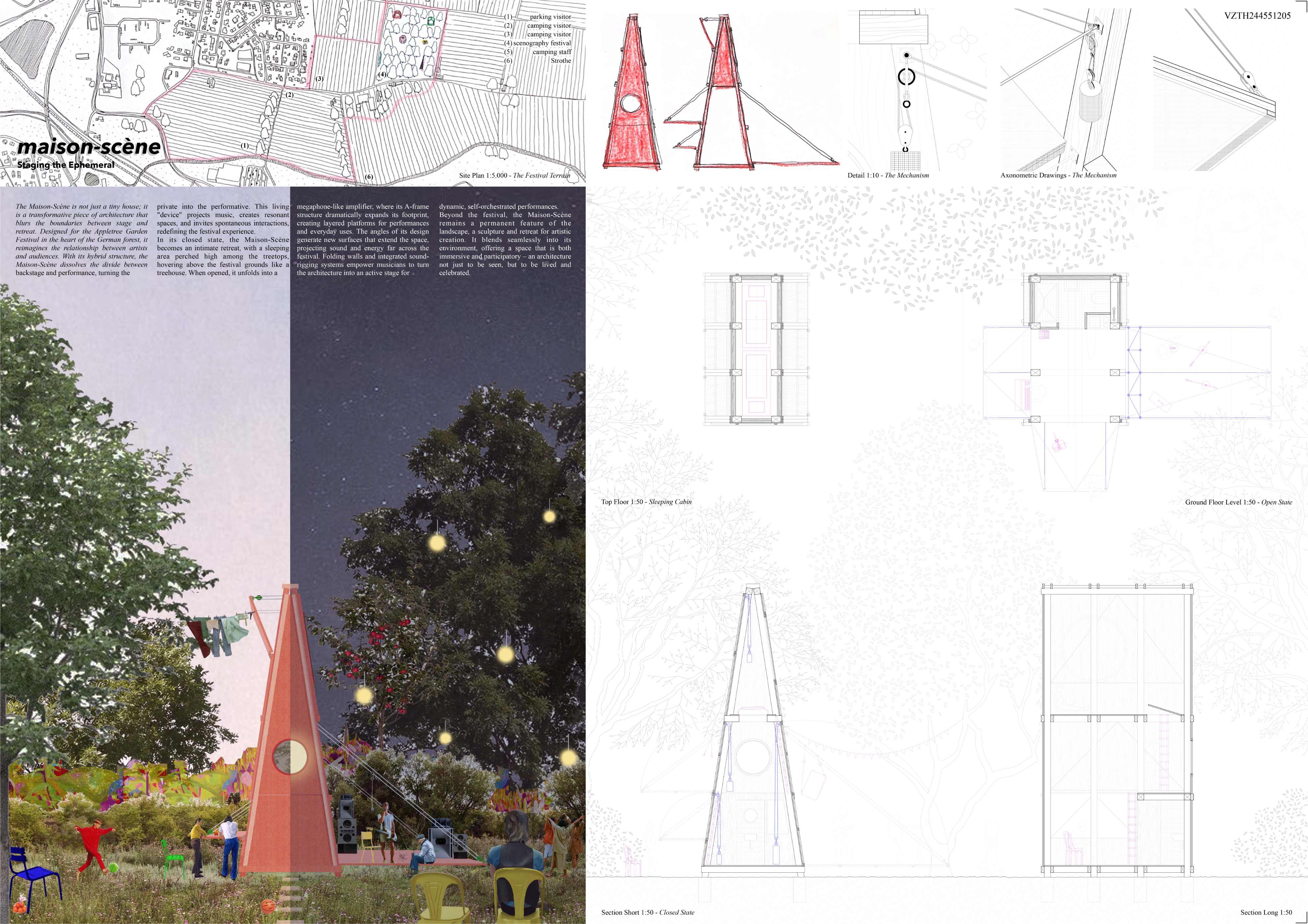
Honourable Mention 4
FLOATING NEST - Rahij Muhammad, Shaheer Ahmed and Burhan ud Din Patan Wala (Pakistan)
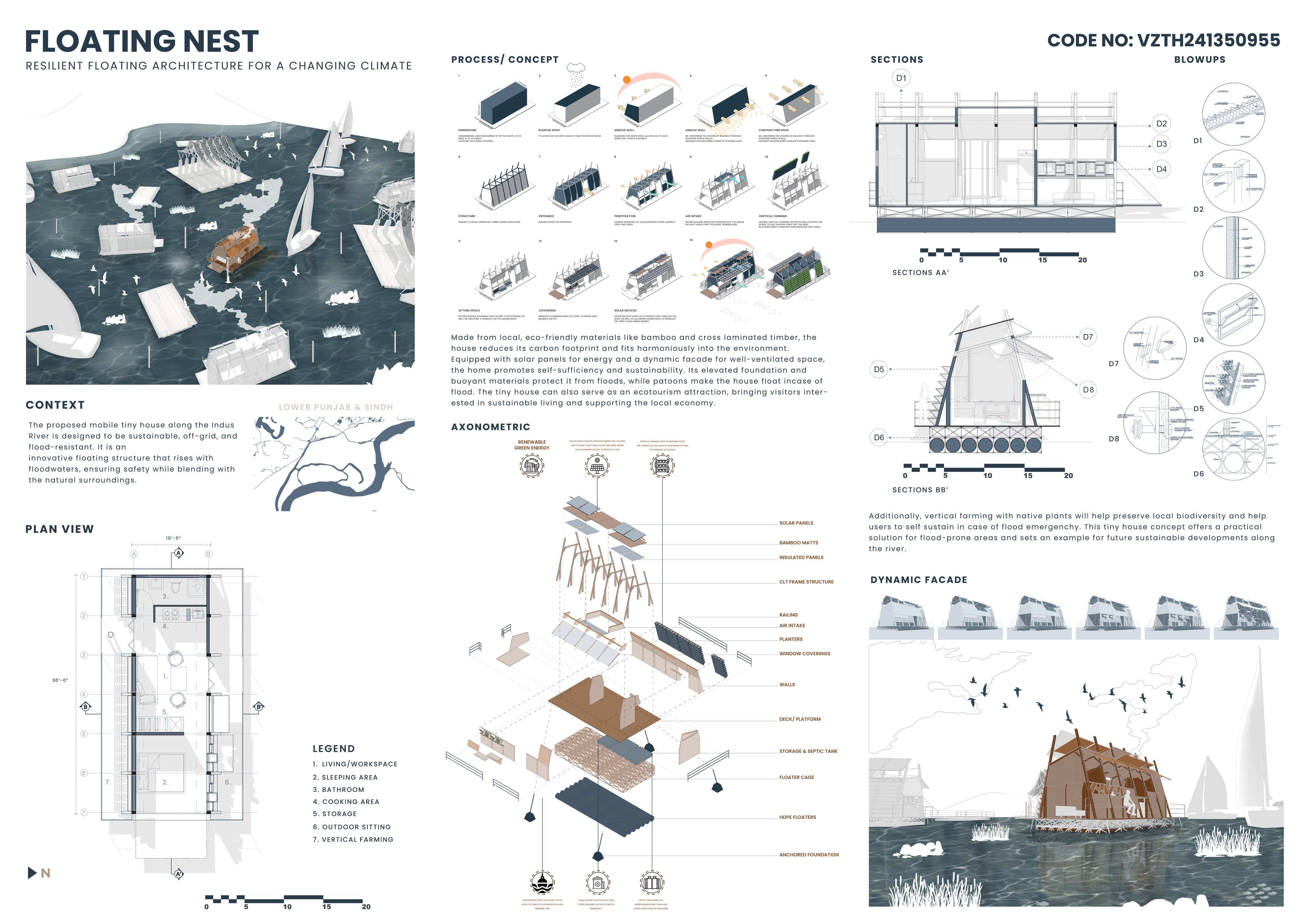
Honourable Mention 5
The Water House - Maximiliano Vecchi and Andy Gonzalez (Chile)
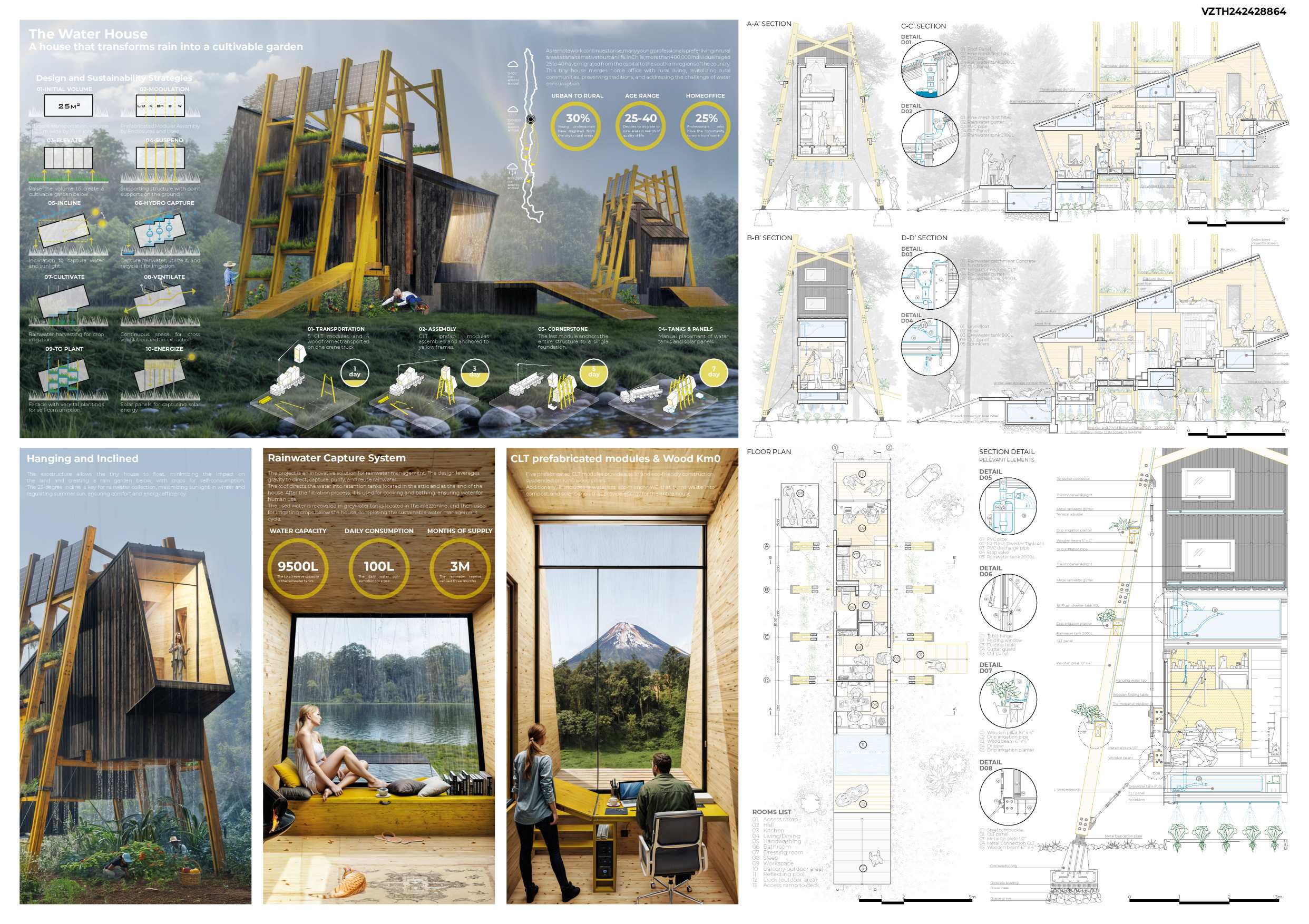
Honourable Mention 6
Bee House - Stanislav Paunovic and Vera Petronijevic (Serbia)
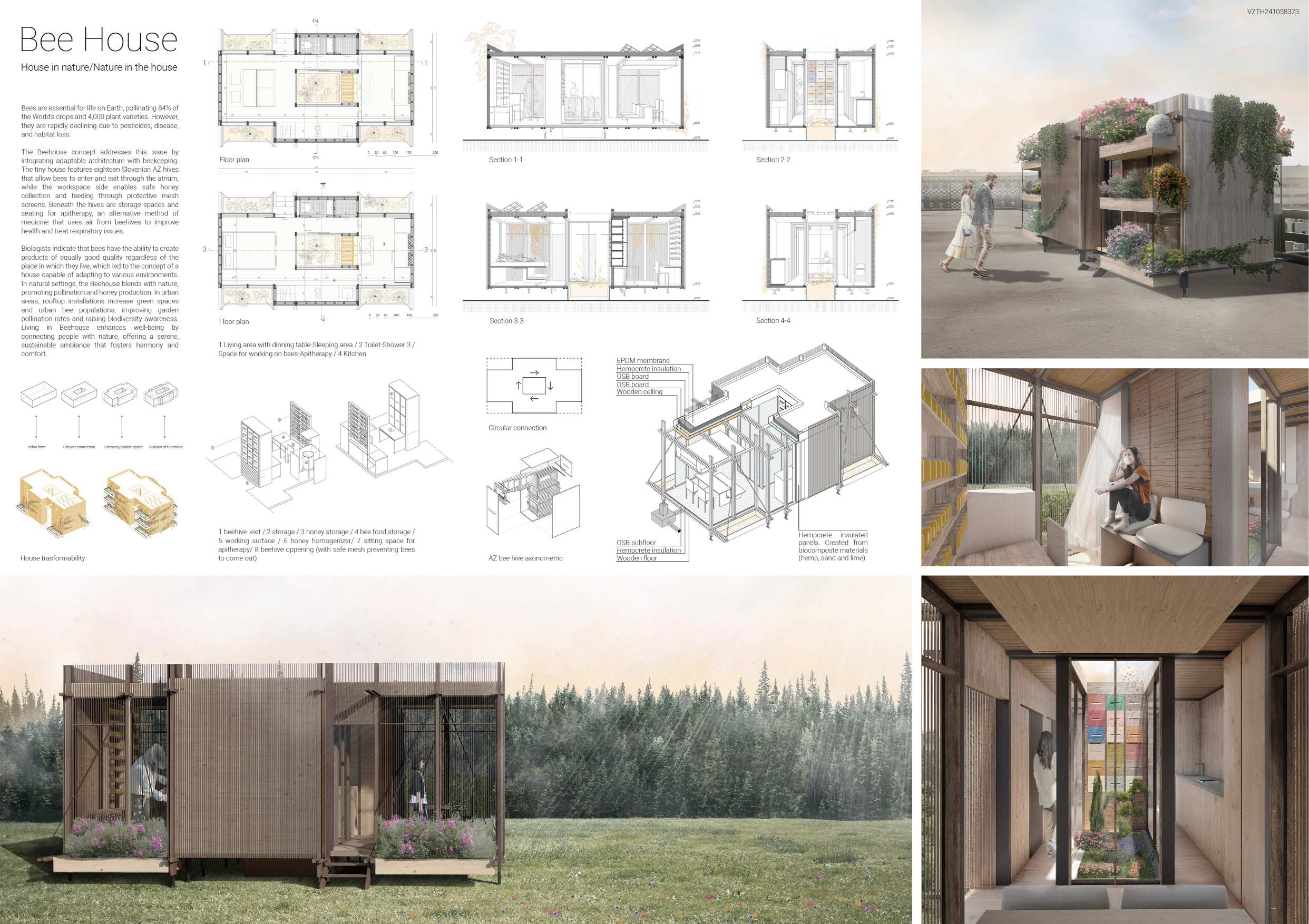
Honourable Mention 7
Terra Hut - Nayera Mohamed Said, Yara Refaee Rabie and Abdelrahman Hussien (Egypt)
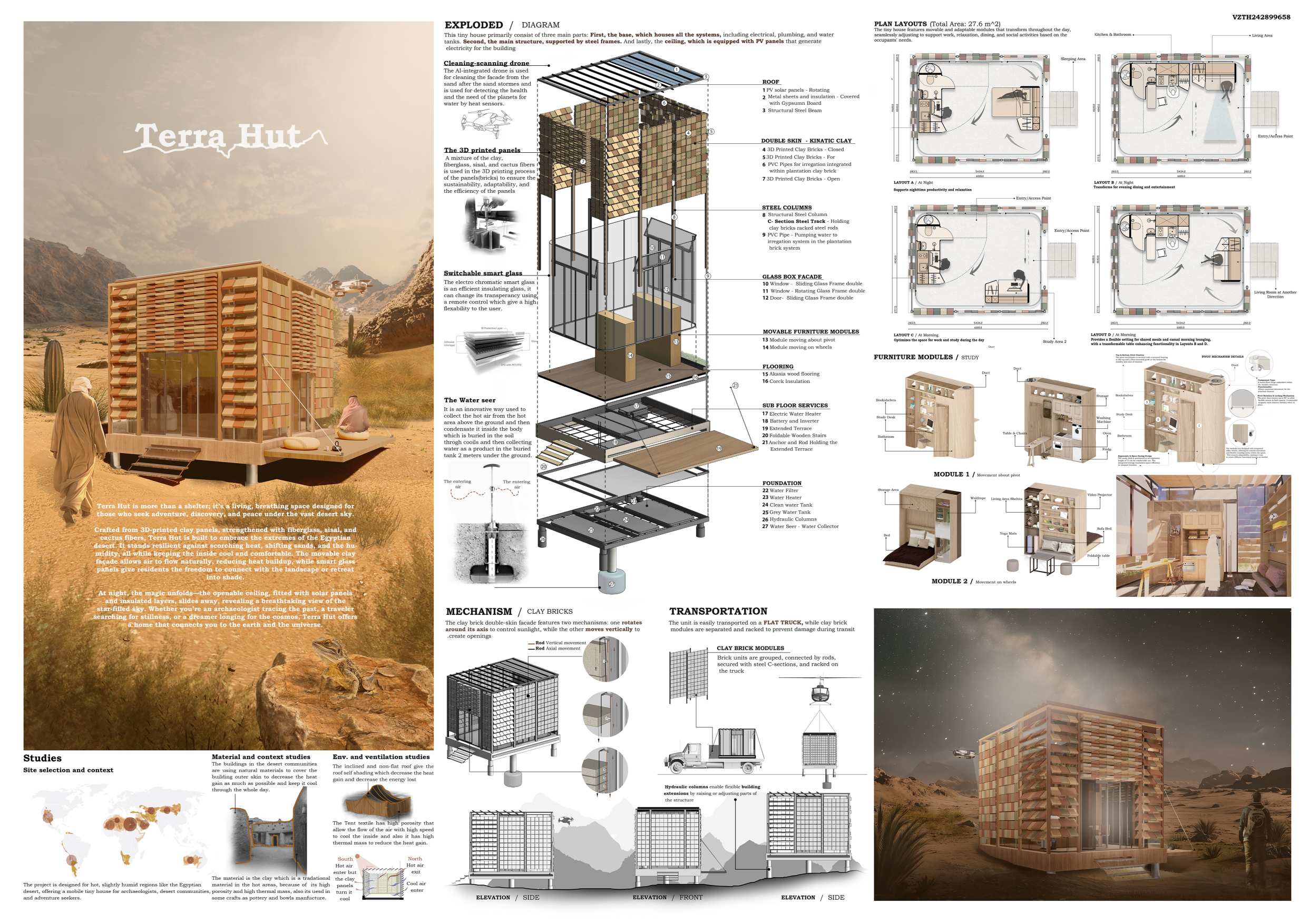
Honourable Mention 8
Airova - Jayani Mehta & Mirnalini Divakar (United States)
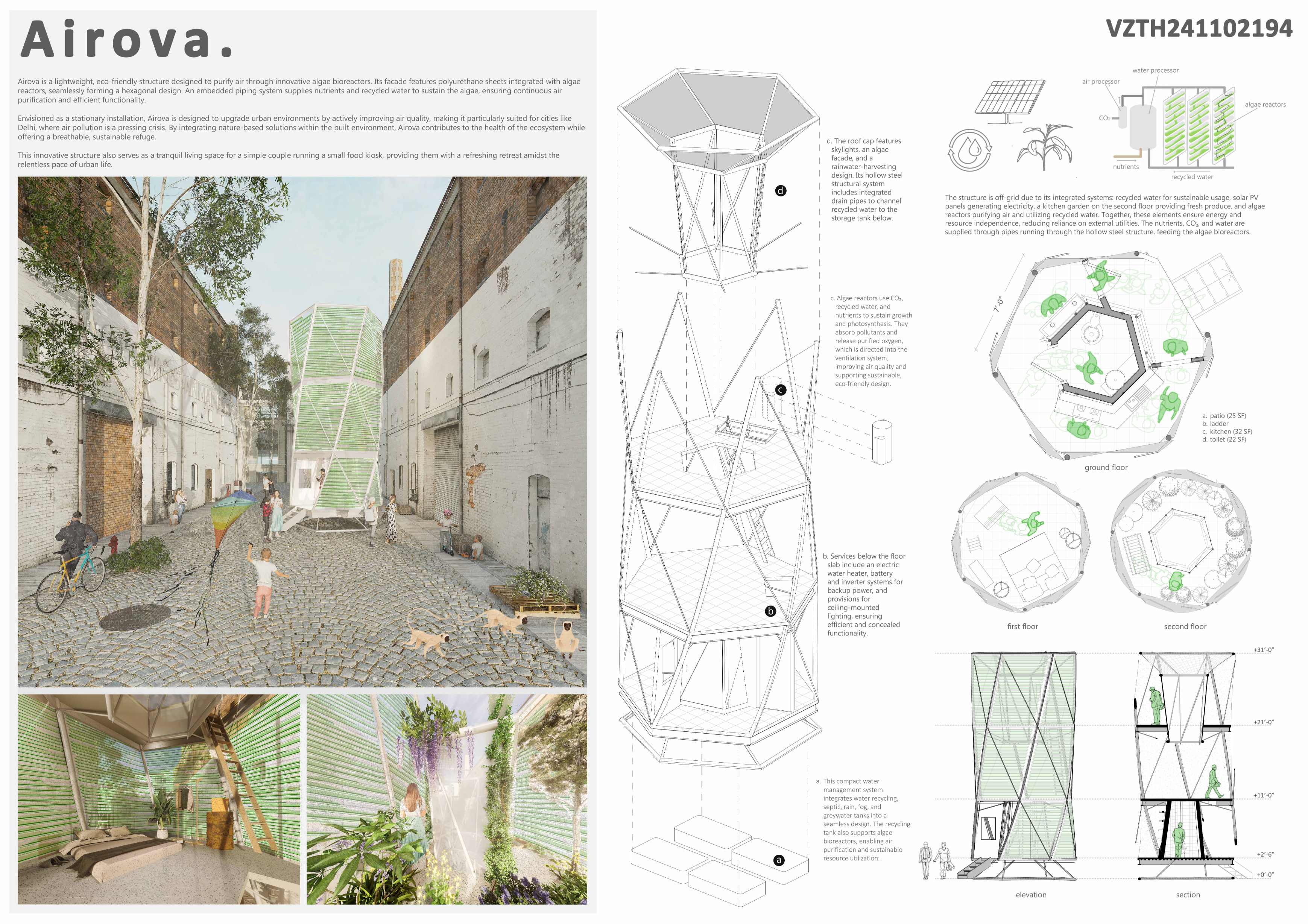
Honourable Mention 9
GLASS LINE - Stela Boldur and Andra Ciobanu (Romania)
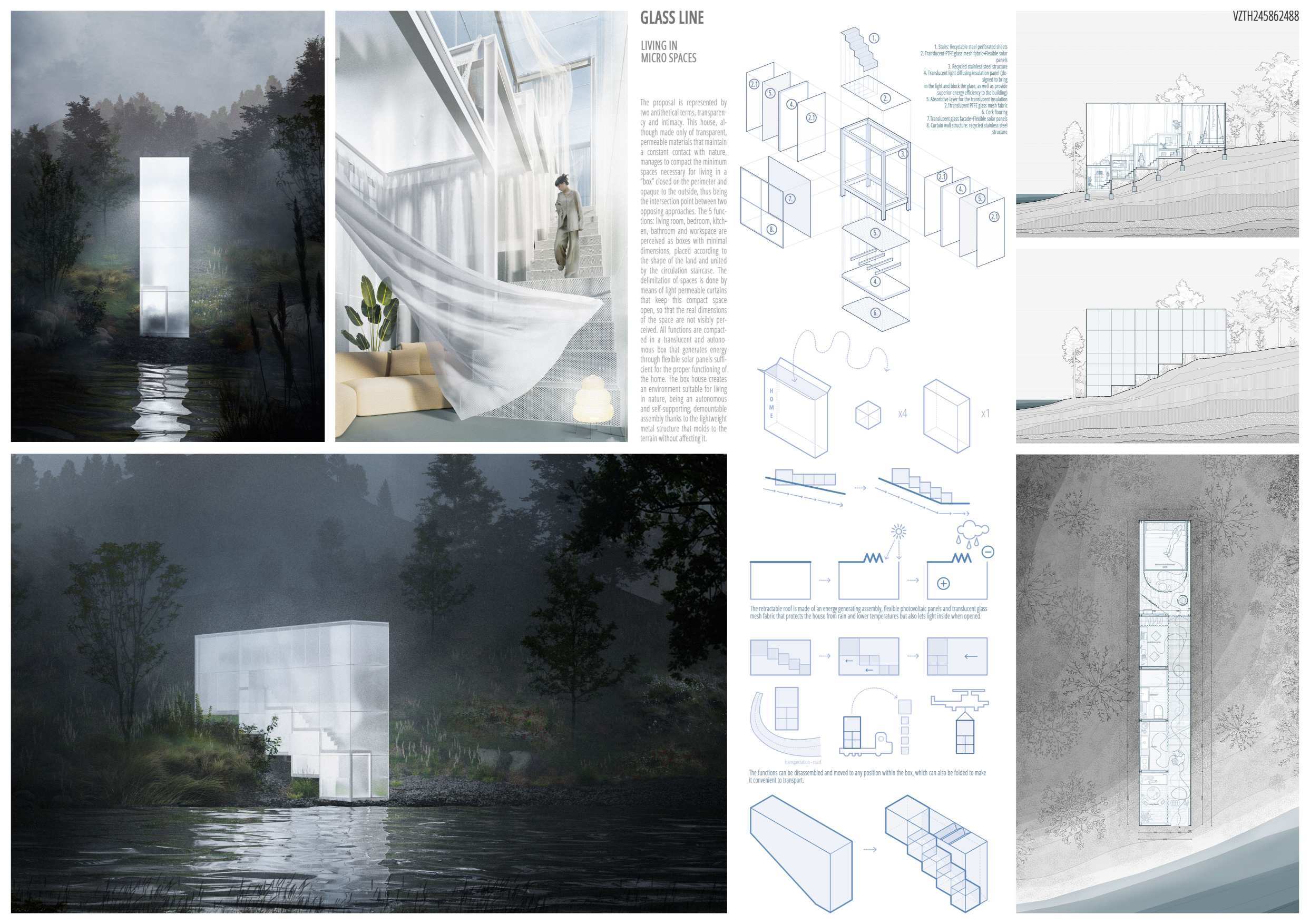
Honourable Mention 10
“TIFFIN” HOUSE - Nafisah Binti Ezam (Australia)
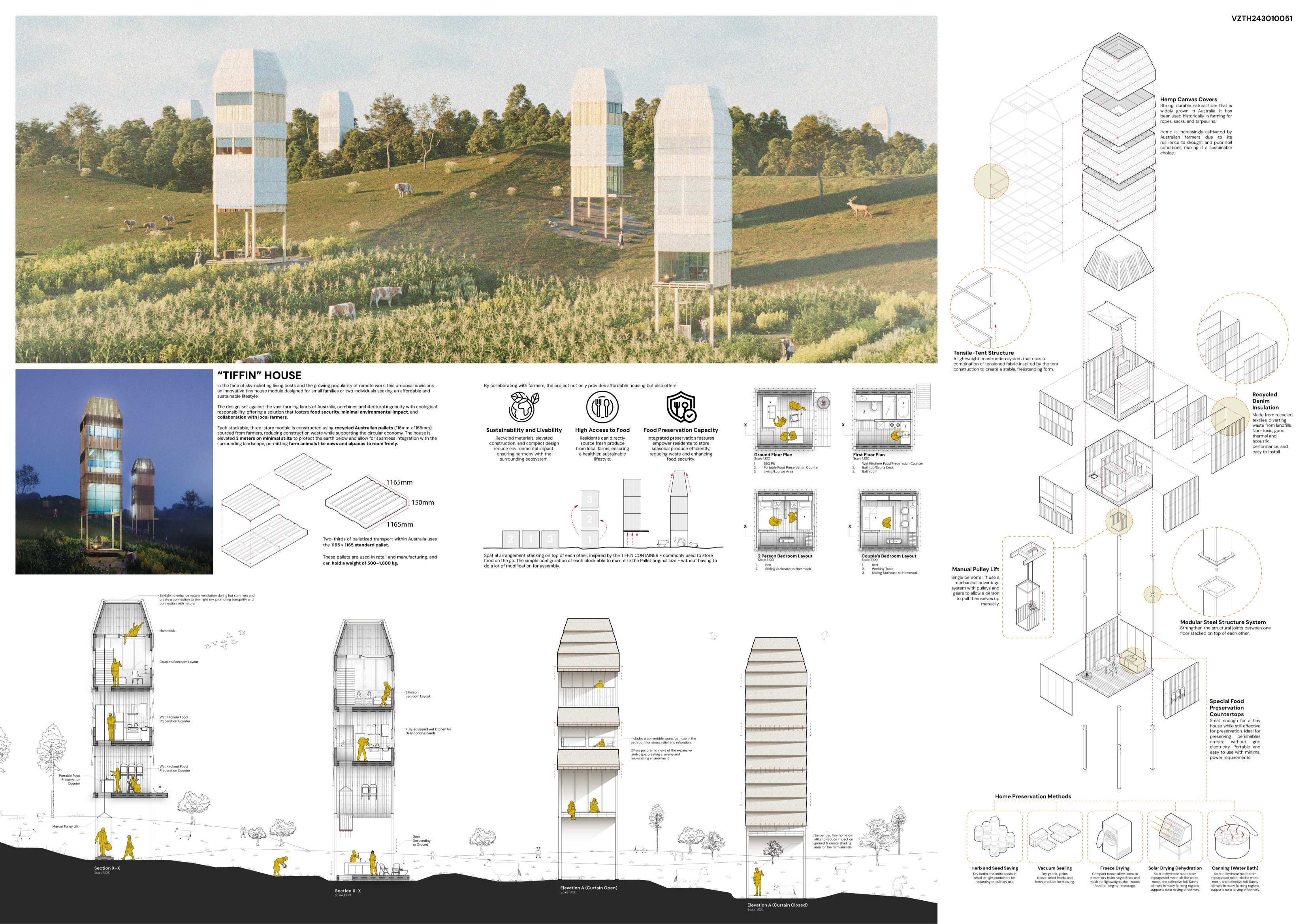

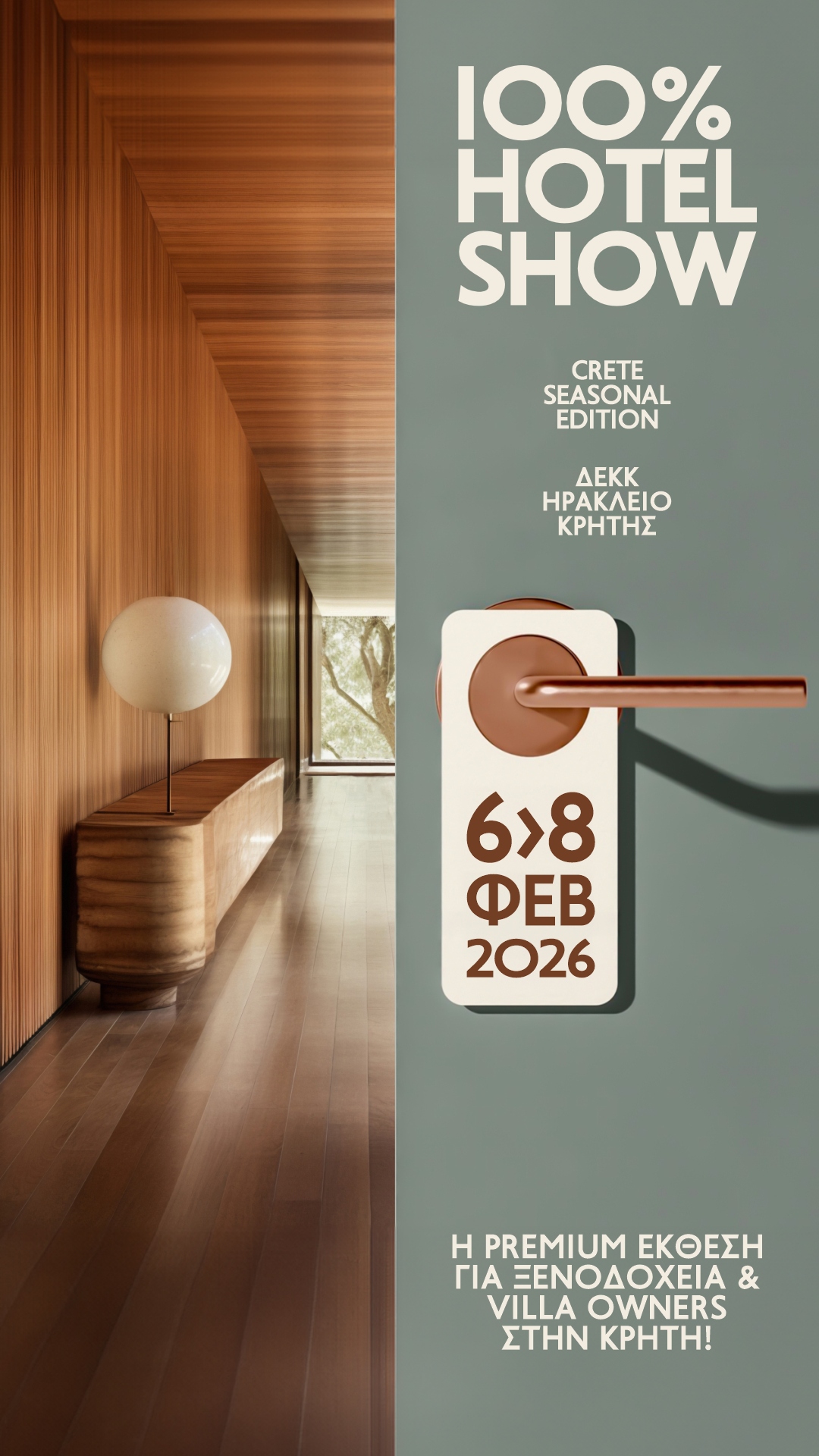
Archetype team - 12/12/2025
 ΟΛΑ ΤΑ ΤΕΥΧΗ
SUBSCRIBE
ΟΛΑ ΤΑ ΤΕΥΧΗ
SUBSCRIBE
Μπορείς να καταχωρήσεις το έργο σου με έναν από τους τρεις παρακάτω τρόπους: